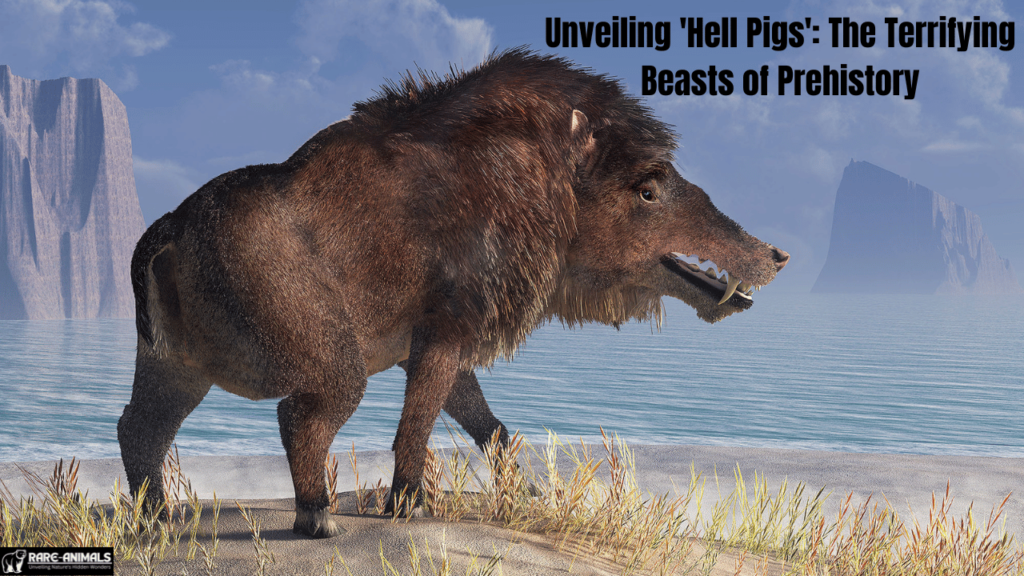Imagine a world where creatures with massive jaws, sharp teeth, and robust bodies roamed freely. These prehistoric beasts, often referred to as “hell pigs,” were among the most fearsome animals of their time. Officially known as entelodonts, these creatures were neither pigs nor entirely hellish, but their intimidating appearance and behavior earned them the ominous nickname.
In this article, we’ll explore the fascinating world of hell pigs, their characteristics, habitats, and why they were one of prehistory’s most formidable predators.
What Were Hell Pigs?
Physical Characteristics
Hell pigs were large, omnivorous mammals that lived approximately 19 to 37 million years ago during the Eocene and Oligocene epochs. Despite their nickname, entelodonts were not closely related to modern pigs but were part of the now-extinct Entelodontidae family. Some notable features include:
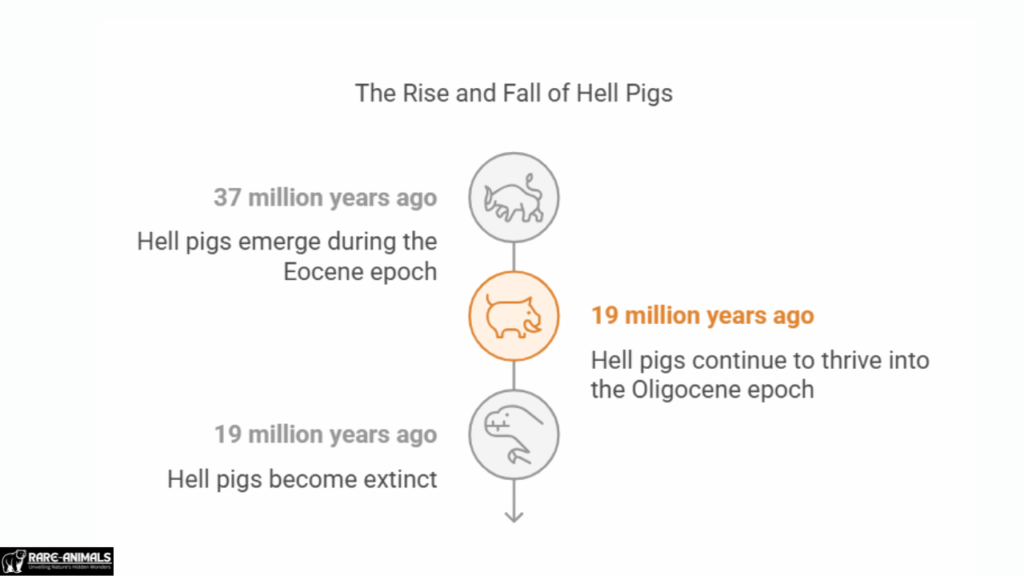
- Size: Hell pigs could grow up to 6 feet tall at the shoulder and weigh over 1,000 pounds.
- Skull and Jaws: Their massive skulls, sometimes measuring over 3 feet long, housed powerful jaws capable of crushing bone.
- Teeth: Equipped with sharp canines and robust molars, they could tear through meat and grind plant material.
- Body Structure: They had a bulky build, long limbs, and hooved feet, making them both fast and powerful.
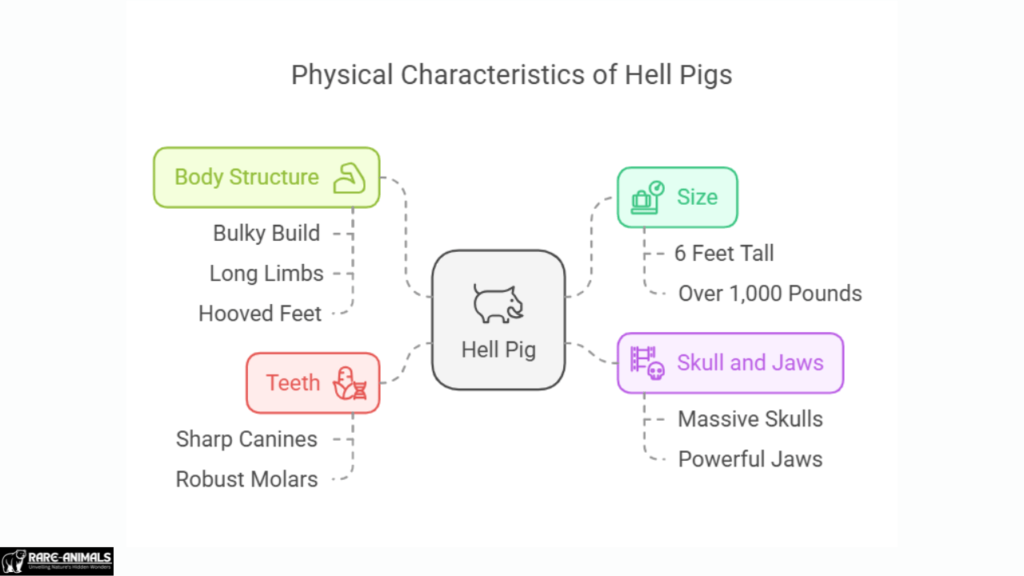
Diet and Behavior
Hell pigs were opportunistic omnivores, meaning they consumed a variety of foods, from meat to plants. Their diet likely included:
- Carrion from other animals’ kills.
- Fresh prey they hunted using their powerful jaws.
- Roots, fruits, and other vegetation.
Their aggressive behavior and adaptability made them apex predators in their ecosystems.
The Habitat of Hell Pigs
Geographical Range
Hell pigs predominantly lived in North America and Asia, thriving in diverse environments, including:
- Open woodlands
- Grasslands
- Semi-arid regions
Fossil evidence suggests they were highly adaptable, capable of surviving in various climates and terrains.
Fossil Discoveries
Significant fossil discoveries have provided insights into their existence. Key locations include:
- South Dakota’s Badlands: Rich deposits of entelodont remains.
- Mongolia’s Gobi Desert: Evidence of their Asian counterparts.
- Nebraska and Wyoming: Fossils indicating their prevalence in North America.
Why Were They Called “Hell Pigs”?
The nickname “hell pigs” stems from their:
- Fearsome Appearance: Their large skulls, sharp teeth, and robust build were intimidating.
- Predatory Behavior: Fossil evidence suggests they were aggressive, engaging in frequent fights over territory or food.
- Misleading Classification: Early paleontologists associated them with pigs due to their physical similarities, but genetic studies have since clarified their distinct lineage.
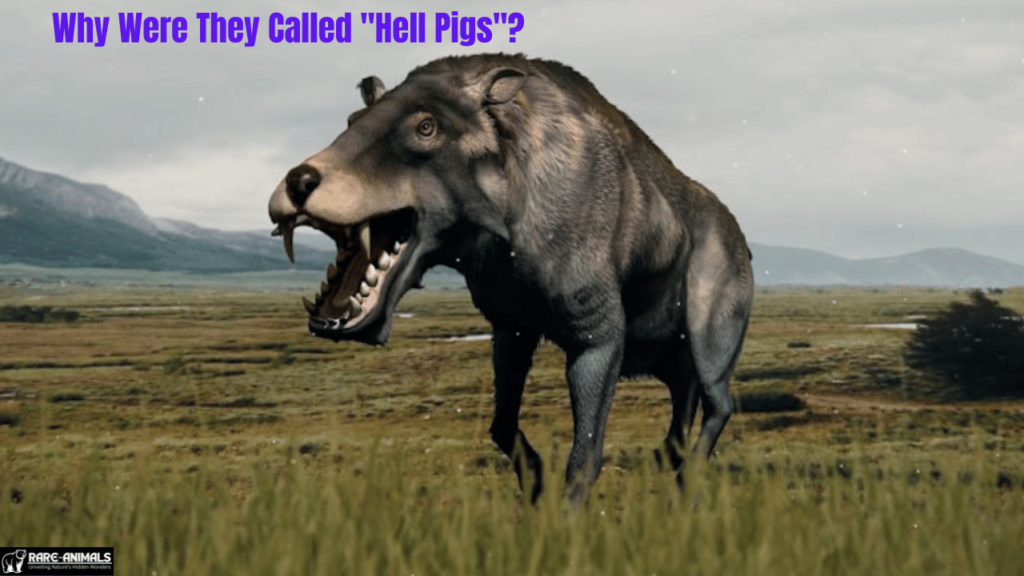
How Did Hell Pigs Become Extinct?
Factors Leading to Extinction
Several theories explain the extinction of entelodonts, including:
- Climate Change: Shifts in global temperatures may have altered their habitats and food sources.
- Competition: The rise of more specialized predators, such as early canids and large felines, likely outcompeted them.
- Ecological Changes: The gradual replacement of open woodlands with dense forests reduced their preferred habitats.
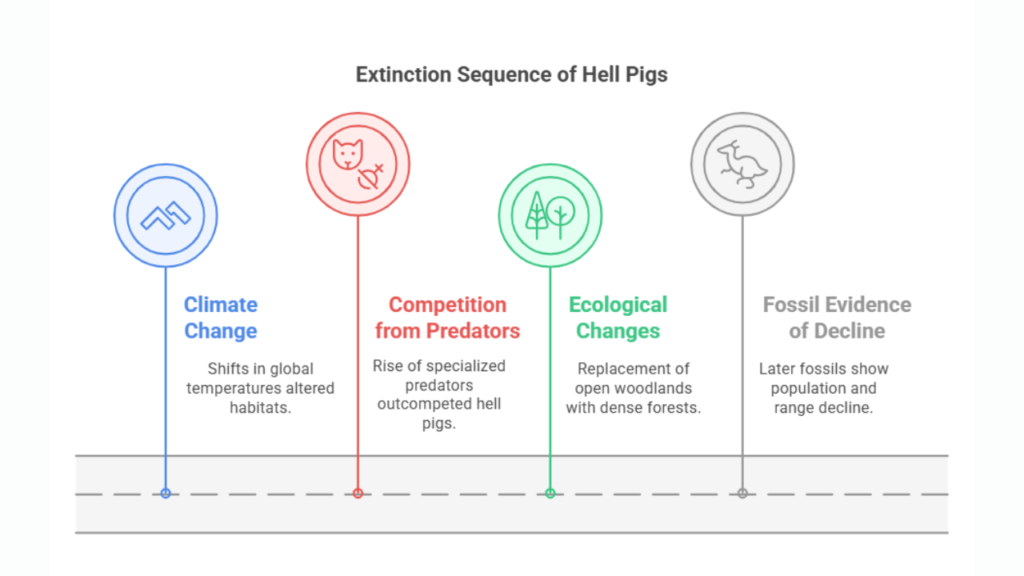
Fossil Evidence of Decline
Later fossil records show a decline in their population and range, coinciding with the emergence of new predators and herbivores better adapted to changing environments.
FAQs
1. Were hell pigs related to modern pigs?
No, entelodonts were not direct ancestors of modern pigs. They belonged to a separate family, Entelodontidae, and were more distantly related to hippos and whales.
2. What made hell pigs such effective predators?
Their combination of speed, powerful jaws, and adaptability allowed them to dominate as apex predators in their ecosystems.
3. How were hell pig fossils discovered?
Fossils were unearthed in various regions, with notable finds in North America’s Badlands and Asia’s Gobi Desert. These fossils revealed their unique anatomy and behaviors.
4. Could hell pigs run fast?
Yes, despite their bulky appearance, hell pigs had long legs and were capable of running quickly to chase prey or evade threats.
5. Why are they so popular in pop culture?
Their intimidating appearance and unique nickname make them a favorite in documentaries and museum exhibits, capturing the imagination of science enthusiasts.
Conclusion
Hell pigs, or entelodonts, were among the most fascinating creatures of prehistory. Their unique combination of size, strength, and adaptability ensured their dominance for millions of years. While they no longer roam the Earth, their fossils continue to provide valuable insights into the ecosystems of ancient times.
If you’ve enjoyed learning about these terrifying beasts, share this article with fellow science enthusiasts or explore more about prehistoric life!

Alveena is an experienced content writer with a knack for crafting engaging and insightful pieces. She thrives on breaking down complex ideas and presenting them as clear, captivating content that resonates with readers.

